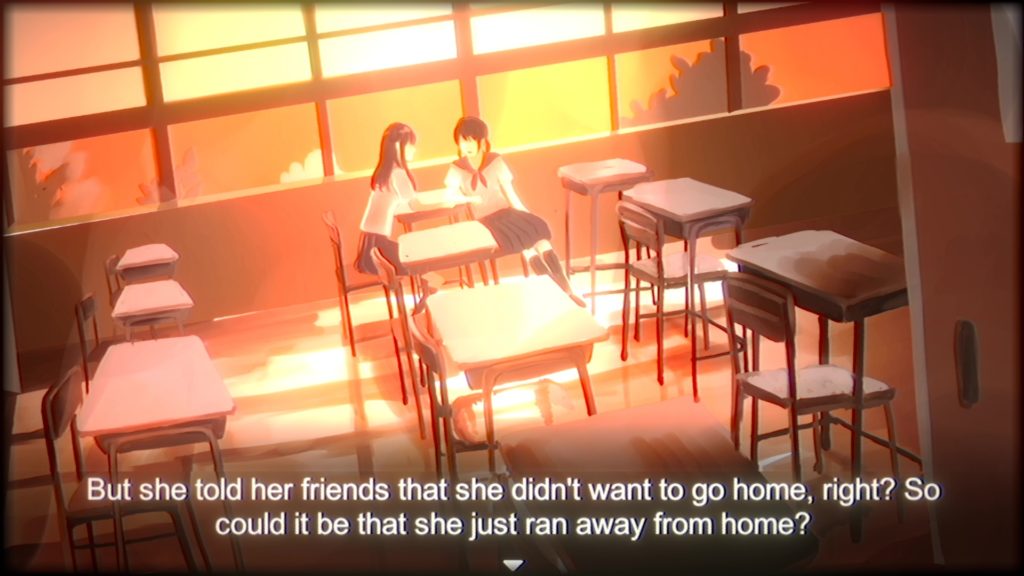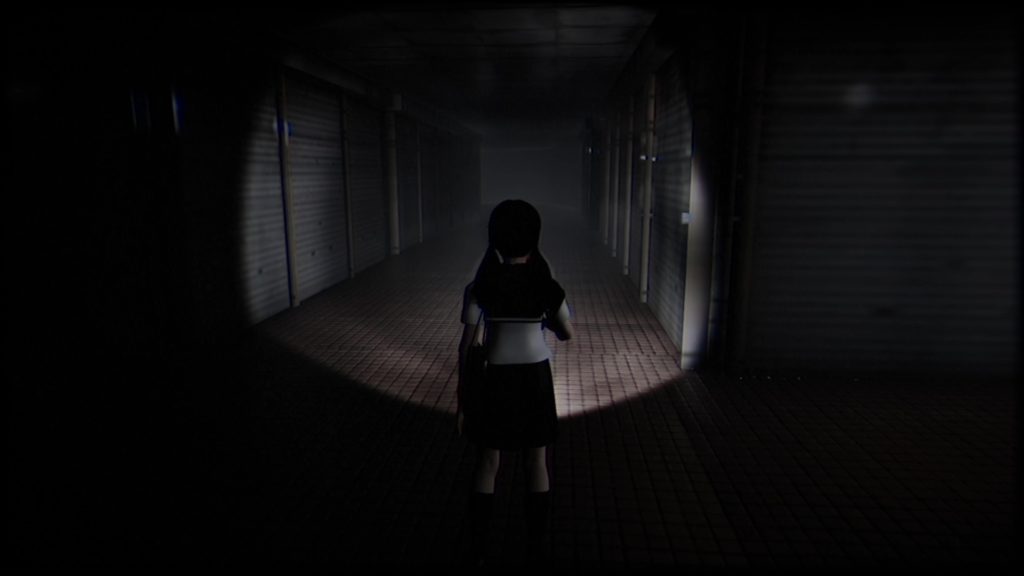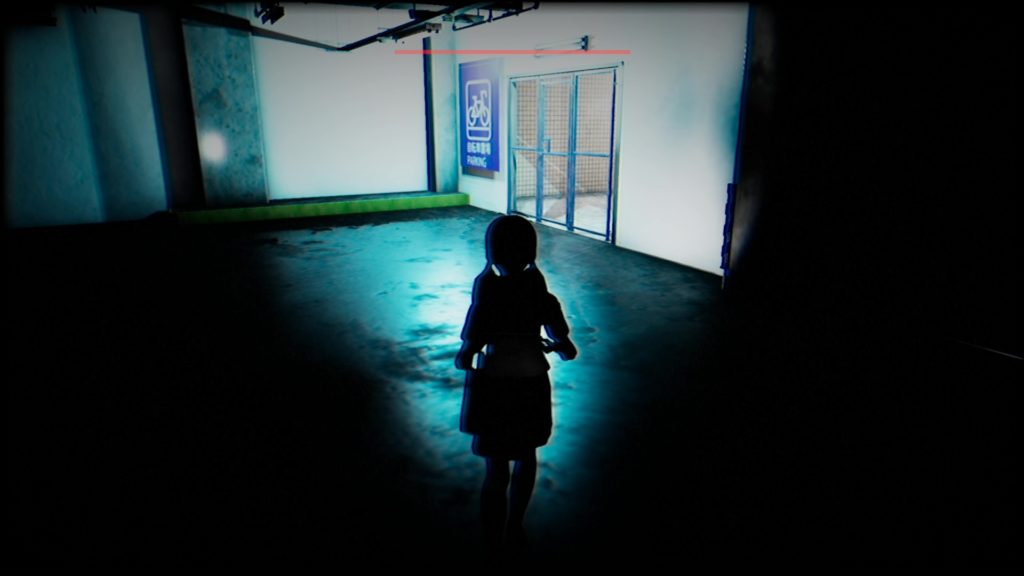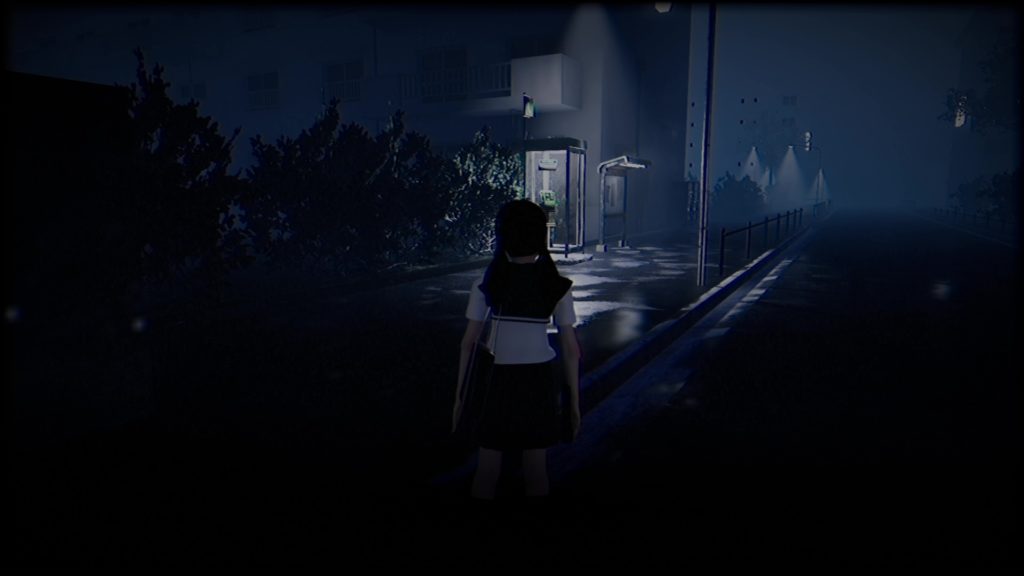The Night Way Home: better than a walk of shame
Over the course of their growing library of games, the two-man development team Chilla’s Art has experimented with a variety of different ways to make “horror games”.
Their earlier titles adopted a PS1-esque aesthetic and placed a strong emphasis on survival, while their later titles tend to be more narrative-centric with visuals that wouldn’t have looked out of place on the PlayStation 2. The Night Way Home, meanwhile, acts as something of a middle ground between these two “extremes”.

In The Night Way Home, you take on the role of a schoolgirl named Rina, who isn’t sure that she really wants to go home after the school day is over. The story of a missing girl who also said that she didn’t want to go home is weighing heavily on her mind — and it seems that Rina has her own concerns over her home life, too, though she doesn’t initially go into detail about this.
After a quick visit to the little girls’ room in the subway station nearest her home, Rina has a strange encounter with a crying girl. She passes out, and when she awakens things have gotten a bit weird. All the lights are off, all the people are gone and there seems to be some sort of deeply unpleasant “presence” patrolling the corridors of the station. Understandably upset at the situation — and suddenly a lot more keen to get home than she was a short while earlier — Rina sets out to escape the subway, recover her bicycle and hopefully not end up as a meal for otherworldly horrors along the way.
What follows is an experience rather different from the other Chilla’s Art games we’ve explored to date. For starters, The Night Way Home unfolds from a third-person perspective by default. It is possible to switch it to first-person so it more closely resembles past Chilla’s Art titles, but the camera for this feels a little too low to the ground to be truly comfortable, plus it’s pretty clear that the game has been designed around the third-person camera.

There’s a much stronger feel that Chilla’s Art has made an effort to play up the “game” aspects in The Night Way Home, too. At any point Rina is in the dark, a meter representing her anxiety starts to rise, and if this caps out she starts panicking, which causes her to make noise and not be able to interact with anything.
Noise, of course, attracts spooky things, so if you want to stay safe you’ll want to carefully move quickly between pools of light in order to stay as safe as possible — and, of course, swiftly head in the opposite direction if you see something that shouldn’t be there. Because, as it turns out, running into an actual ghost also makes Rina immediately panic. Who’d have thought it?
The Night Way Home unfolds over the course of several distinct stages, each of which has a clear objective to accomplish. Initially, you need to get Rina out of the subway station, which involves finding a means of opening the exit shutters. In subsequent stages, you’ll usually need to simply find an exit to the next area — though in some cases there will be prerequisites to doing this. In one instance, you need to find some discarded pocket change to pay for a bus ride; in another, you need to avoid the ghostly presences long enough for a train to pass by a level crossing so you can proceed onward.

There are some interesting variations on the “zip between light spots, occasionally run away in a blind panic” gameplay formula along the way, too. During the sequence where you need to find change for the bus, for example, which unfolds in a rather large city map, you’re armed with a harae oonusa, which you can use to temporarily repel the spirits — though while wielding it you can only move slowly and it doesn’t emit as much light as your torch. And during a logic puzzle towards the end of the game, the “threat” element is mercifully absent, allowing you to concentrate on actually figuring out the riddle.
As a horror game, The Night Way Home is nicely designed. The environments are designed to be unsettlingly claustrophobic and labyrinthine, even in situations where you might expect things to be a bit more open-plan. During a sequence where Rina is working her way through a car park, for example, cars are scattered chaotically around — with even a few in places where you wouldn’t normally expect to find a car, such as in the stairwell — which makes getting around quite challenging, particularly while being chased.
Probably the biggest highlight in this regard is a sequence in some suburban alleyways, a setting which we’ve seen in quite a few Chilla’s Art titles to date. Here, the layout of the pathways actually isn’t all that complicated, but the fact that light is so hard to come by and there are so many twists and turns means that the whole area feels like a terrifying maze — and, of course, there’s the ghost to worry about, too.

Where The Night Way Home arguably falters a bit is in the delivery of its narrative. Uncovering the truth of Rina’s feelings is subject to you locating several spiritual imprints of her child-like self around the various environments, and figuring out how what these projections tell you relates to the overall plot. The ending in particular leaves things somewhat open to interpretation, which is good in some ways — but after some of Chilla’s Art’s other pieces, it’s hard not to feel like they’ve done “story” better elsewhere, and that their “walking simulator” format is more appropriate for delivering a meaningful narrative.
This isn’t to say that The Night Way Home isn’t a worthwhile experience, of course. In “game” terms, it’s one of Chilla’s Art’s more satisfying titles, despite a few little bugs here and there — and, like all their more recent titles, some replay value is added through a collectible sticker element, with each sticker representing one of the duo’s Patreon backers. Just go into this one expecting an interesting horror game rather than an interactive short horror story and you’ll doubtless have a good time for an hour or so.
The Night Way Home is available now for PC via Steam.
Join The Discussion
Rice Digital Discord
Rice Digital Twitter
Rice Digital Facebook
Or write us a letter for the Rice Digital Friday Letters Page by clicking here!
Disclosure: Some links in this article may be affiliate links, which means we may earn a small commission if you make a purchase after clicking on them. This is at no additional cost to you and helps support Rice Digital!
- Letter from the Editor: passing the torch - June 30, 2023
- Super Woden GP 2 is looking promising - June 30, 2023
- Inti Creates is making a 32 bit-style Love Live action platformer - June 26, 2023







